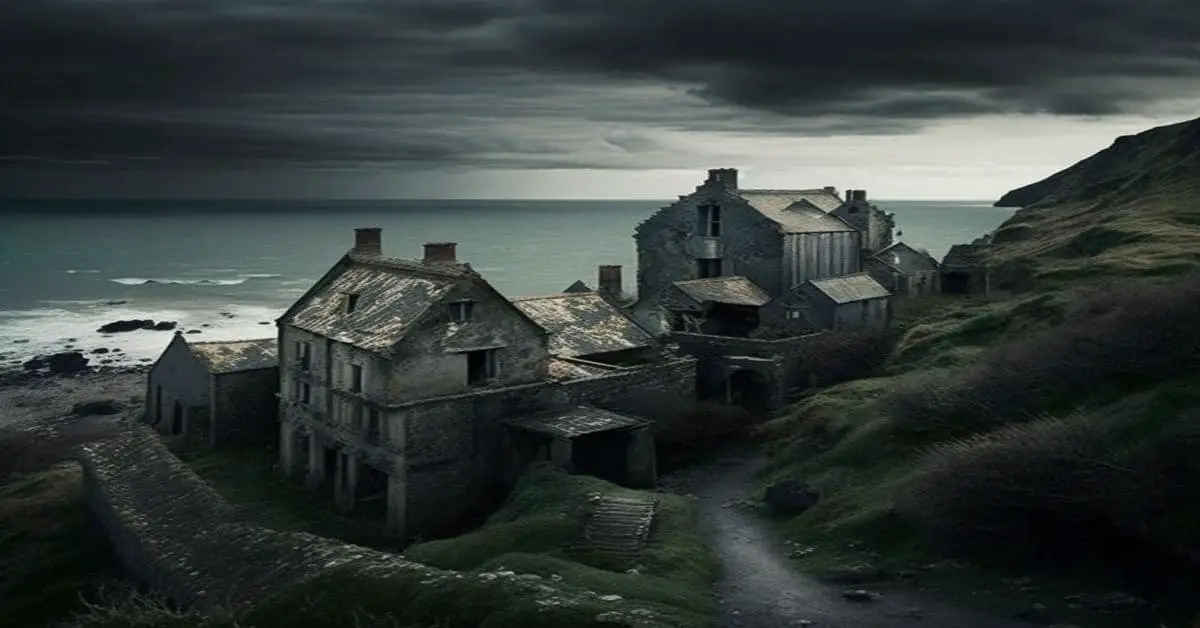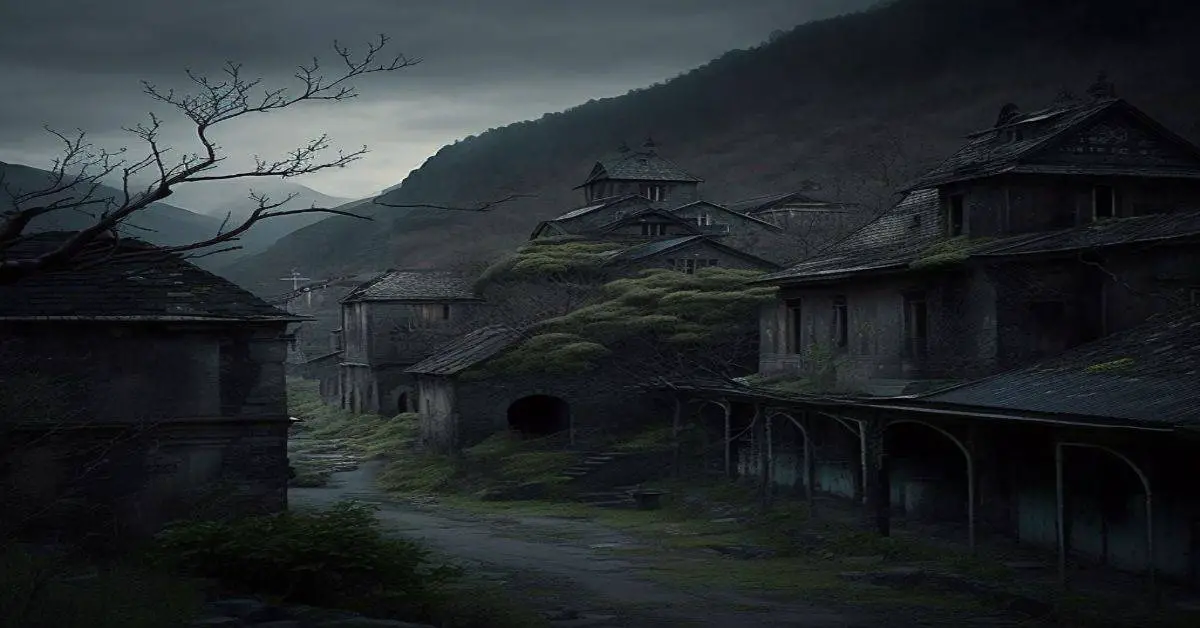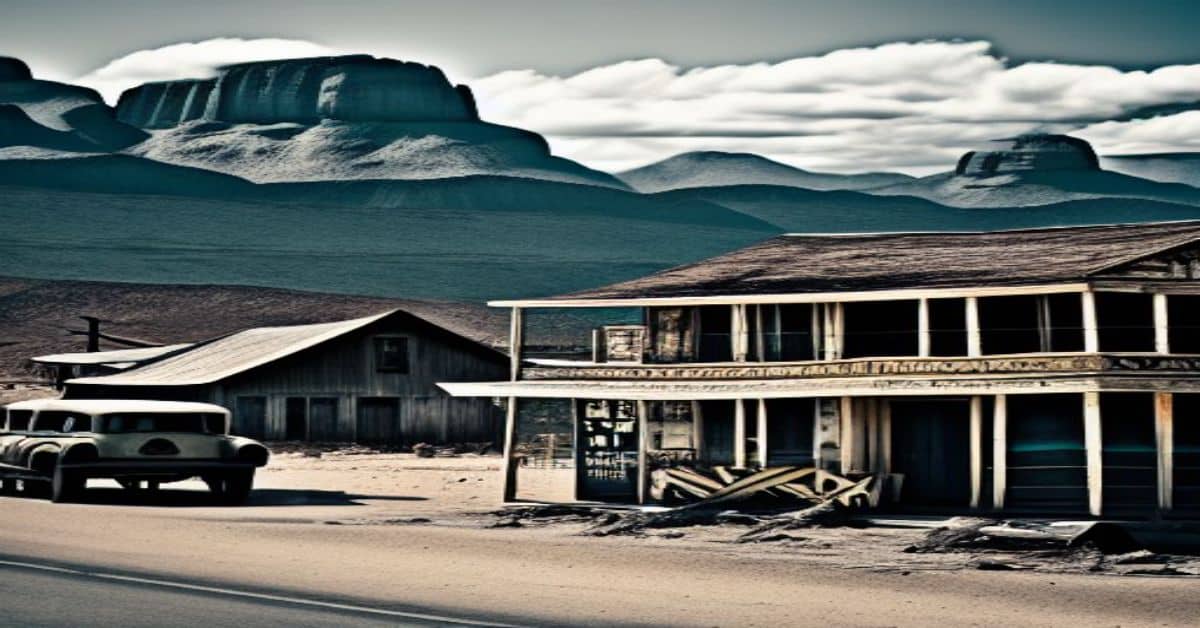Cimarron, located in New Mexico, is a captivating ghost town that attracts visitors worldwide. With its original buildings, cemetery, and post office that has been in operation since 1861, Cimarron offers a unique glimpse into the past. The town’s rich history and connection to famous figures such as Lucien B. Maxwell, Buffalo Bill Cody, Davy Crockett, and Billy the Kid make it a must-see destination for history enthusiasts.
Visitors to Cimarron can learn about the town’s past through its many attractions, including the St. James Hotel, which was built in 1878 and restored to serve as a museum with Indian artifacts and items from the hotel’s history. The town also features a jail and offers insights into the lives of the people who once called it home.
Cimarron’s reputation as one of the most exciting ghost towns in New Mexico only adds to its allure, making it a unique and fascinating destination for anyone interested in history or the wild west.
Key Takeaways
- Cimarron is a historic ghost town in New Mexico with original buildings, a cemetery, and a post office since 1861.
- The town connects to famous figures such as Lucien B. Maxwell, Buffalo Bill Cody, Davy Crockett, and Billy the Kid.
- The St. James Hotel, built in 1878, is now a museum with Indian artifacts and items from the hotel’s history and is reputedly haunted.
- Cimarron’s attractions include a jail, cemetery, Aztec Mill, and original buildings that glimpse the Wild West past, drawing history buffs and Old West enthusiasts to its streets.
Location and Attractions
Located in Cimarron, New Mexico, the historic ghost town boasts of attractions such as the St. James Hotel, which was built in 1878 by Fred Lambert’s father, and the town cemetery where Davy Crockett was shot and buried, making it an intriguing destination for history enthusiasts.
Exploring buildings in Cimarron allows visitors to uncover stories about the town’s past. Many of the original buildings still stand, giving visitors a glimpse into the lives of the people who once inhabited the town. The St. James Hotel, for instance, has hosted famous guests such as Buffalo Bill Cody and Jesse James, and has a reputation for being haunted.
In addition to the St. James Hotel, the town cemetery is also a popular attraction in Cimarron. It is the final resting place of Davy Crockett, who was shot and killed in the town. The cemetery also serves as a reminder of the town’s Wild West past, with grave markers dating back to the 1800s.
For those interested in history, the cemetery provides a unique opportunity to learn more about the people who lived and died in Cimarron.
“Visit Cimarron, New Mexico and enjoy the rustic quiet of our village and the comfortable lodgings available. Then, feast on a hearty southwestern style breakfast at a local restaurant. After breakfast, step outside and breathe in the fresh mountain air as you stroll past the 14 historical sites of Old Town, including the Old Mill Museum.”
http://www.cimarronnm.com/
History and People
The post office in Cimarron, New Mexico was established in 1861 and remains in operation, reflecting the town’s longstanding history. The town’s history is further enriched by the presence of Lucien B. Maxwell’s estate, a vast property that had a significant impact on the town’s development. Maxwell was a prominent figure in the region who played a key role in establishing Cimarron. The estate’s influence can still be seen in the many original buildings that exist in the town today.
The cemetery in Cimarron is also a significant part of the town’s history. Notable figures buried there include Davy Crockett, who was shot and killed in Cimarron, and Billy the Kid, who was slain in Maxwell’s son’s bedroom in Fort Sumner. The cemetery is a testament to the town’s past and serves as a reminder of the many colorful characters who once lived there.
Together, the history and people of Cimarron make it a unique and fascinating destination for those interested in the Old West.
Reputation and Legacy
Renowned for its rich history and famous inhabitants, Cimarron has earned a reputation as one of the most fascinating and alluring destinations for those interested in the Old West. With its many original buildings and cemetery, the town has managed to preserve its legacy, attracting visitors worldwide.
With its colorful history, Cimarron’s St. James Hotel is a major attraction and has been the subject of numerous books and documentaries. The town’s legacy preservation efforts have successfully maintained its historical integrity, offering tourists a glimpse into the past.
The restored Aztec Mill, now a region museum, showcases Indian artifacts and items from the hotel, adding to the town’s charm. Despite its small size, Cimarron’s tourism impact cannot be underestimated, as it continues to draw history buffs and Old West enthusiasts to its streets.
Its reputation as one of New Mexico’s most exciting ghost towns is well-deserved, and it is poised to continue its legacy as a fascinating historical destination for years to come.
Frequently Asked Questions
What is the current population of Cimarron, New Mexico?
There is no available information on the current population of Cimarron, New Mexico. However, exploring the history of this town reveals its rich cultural and historical significance, including the St. James Hotel and the cemetery. Community demographics are not specified.
Are there any annual events or festivals held in Cimarron?
Community involvement in Cimarron includes annual events such as the Fourth of July Parade and Rodeo. Tourist attractions like the St. James Hotel and Aztec Mill Museum also draw visitors year-round.
What is the climate like in Cimarron, New Mexico?
Cimarron experiences a semi-arid climate with hot summers and cold winters. Temperature fluctuations are common, and precipitation patterns are characterized by low rainfall and occasional snowfall. Outdoor activities and wildlife observation opportunities are available year-round.
Is there a local economy in Cimarron, and if so, what industries are present?
Cimarron has a small local economy with limited job opportunities. Some residents work in hospitality and tourism, including at the St. James Hotel and Aztec Mill Museum. There is potential for economic growth through further development of these industries.
Are there any notable restaurants or shops in Cimarron, New Mexico?
Cimarron does not have notable restaurants or shops that offer unique cuisine or shopping experiences. However, the town’s historic buildings, St. James Hotel, and cemetery are popular attractions for visitors interested in the area’s rich history.


